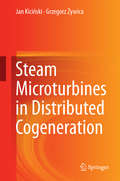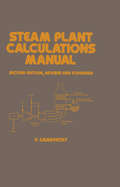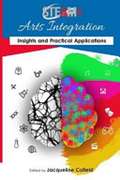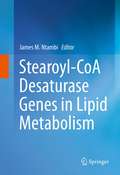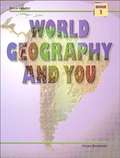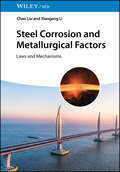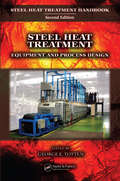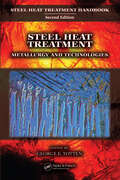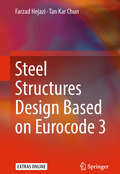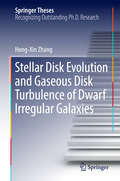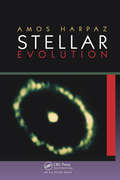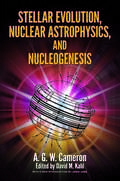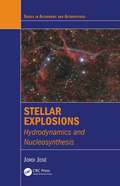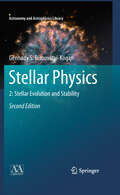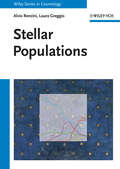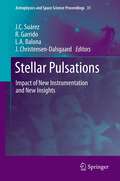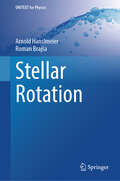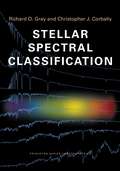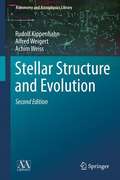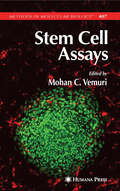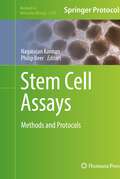- Table View
- List View
Steam Microturbines in Distributed Cogeneration
by Jan Kiciński Grzegorz ŻywicaThis book presents the most recent trends and concepts in power engineering, especially with regard to prosumer and civic energy generation. In so doing, it draws widely on his experience gained during the development of steam microturbines for use in small combined heat and power stations based on the organic Rankine cycle (CHP-ORC). Major issues concerning the dynamic properties of mechanical systems, in particular rotating systems, are discussed, and the results obtained when using unconventional bearing systems, presented. Modeling and analysis of radial-flow and axial-flow microturbines are addressed in detail, covering rotor analysis with different bearing systems, simulation modal analysis, and stress analysis. Furthermore, experimental studies of the dynamic properties of microturbine elements are extensively described. Interest in distributed generation and CHP-ORC is growing rapidly, and the potential market for such systems promises to be very large. This book will be of value for engineers and scientists involved in the design, modeling, operation, and diagnostics of various types of turbomachinery, especially steam microturbines.
Steam Plant Calculations Manual, Revised and Expanded (Mechanical Engineering #87)
by GanapathyMaintaining a question-and-answer format, this second edition provides simplified means of solving nearly 200 practical problems that confront engineers involved in the planning, design, operation and maintenance of steam plant systems. Calculations pertaining to emissions, boiler efficiency, circulation and heat transfer equipment design and performance are provided. Solutions to 70 new problems are featured in this edition.
Steam+ Arts Integration Anthology: Insights and Practical Applications
by Jacqueline CofieldThe 12 contributors featured in this anthology are on the frontlines of STEAM+ Arts Integration Education and include engineers, educators, leaders/founders of STEM and STEAM education programs, teaching artists, and cultural programmers. The book provides a historical summary of STEM to STEAM, case studies, and practical program examples used in classrooms across the country and abroad. A unique resource that includes charts and images displaying a wide range of perspectives and insights to enlighten educators and readers on why STEAM+ Arts Integration is the wave of the future.
Stearoyl-CoA Desaturase Genes in Lipid Metabolism
by James M. NtambiObesity and diabetes develop as a complex result of genetic, metabolic and environmental factors and are characterized by increased lipogenesis and lipid accumulation in many tissues. Stearoyl-CoA desaturase (SCD) genes are a critical regulator of lipogenesis and catalyzes the synthesis of monounsaturated fatty acids (MUFA), mainly oleoyl- (18:1n9) and palmitoleoyl-CoA (16:1n7). These MUFAs are the major fatty acid substrates for the synthesis of triglycerides, cholesterol esters, wax esters and membrane phospholipids. There are 4 SCD isoforms (SCD1-4) in mice and two (hSCD1 and hSCD5) expressed in humans. At first glance, stearoyl-CoA desaturase enzyme would be considered a housekeeping enzyme because it synthesizes oleate a well-known fatty acid that is abundant in many dietary sources. However numerous studies have shown that SCD is a very highly regulated enzyme that features in so many physiological processes ranging from fat differentiation, carbohydrate and fat metabolism, inflammation and cancer. The editor's studies using stearoyl-CoA desaturase knockout (SCD1-/-) mice and studies of other investigators using pharmacological approaches to reduce SCD1 expression in mouse tissues have all established that the expression of SCD1 gene isoform represents a key step in partitioning of lipids between storage and oxidation. High SCD expression favors fat storage leading to obesity while reduced SCD expression favors fat burning and leanness. Although these studies clearly illustrated that SCD1 expression is involved in the development of obesity and insulin resistance, questions remain in the elucidation of the mechanisms involved and role of SCD1. This book includes chapters by leading researchers on SCD Genes in the brain, heart, muscle, liver metabolism, Colitis, and more.
Steck-Vaughn Focus on Science (Level D)
by Elizabeth MaryottThis book puts complete focus on basic science and covers various topics under Life science,Earth science Energy etc.
Steck-Vaughn Science: Test Preparation for the 2014 GED
by Steck-Vaughn CompanyThe newest edition of the GED test presents a range of fresh challenges to learners and educators. Now Houghton Mifflin Harcourt offers you an accelerated yet complete approach to deliver positive test results faster with Steck-Vaughn Test Preparation for the 2014 GED Test.
Steel Corrosion and Metallurgical Factors: Laws and Mechanisms
by Chao Liu Xiaogang LiExploration into the latest research and developments in material corrosion resistance and related technologies Steel Corrosion and Metallurgical Factors: Laws and Mechanisms offers an in-depth exploration of the latest research on modulating metallurgical factors in various types of steel materials to enhance their corrosion resistance. The book covers a diverse range of materials, including low-alloy steels, stainless steels, ductile iron, rebar, and pipeline steel, and outlines the application of corrosion big data technology and artificial intelligence in the revealing of material corrosion mechanisms. The book discusses how typical metallurgical factors such as inclusion control, alloying control, and heat treatment control influence the corrosion resistance of stainless or low alloy steels and provides theoretical guidance for corrosion-resistant steel smelting technologies (e.g., inclusions regulation, alloy modulation, and rolling processes) by investigating the laws and mechanisms underlying the influence of various metallurgical factors on the corrosion resistance of steel. Steel Corrosion and Metallurgical Factors includes information on: Micro- chemical-electrochemical theory of corrosion initiation induced by various typical types of inclusions in stainless and low alloy steelsInfluence of elements such as Ca, Sb, Cu, and Cr on the resistance of low-alloy steels to microbial and marine atmospheric corrosionCoupled mechanism of microstructure and inclusions in corrosion initiation in steelBehavior and mechanism of stress corrosion and hydrogen-induced stress corrosion of pipeline steel induced by environmental and metallurgical factorsEffects of rare earth and chromium elements on the corrosion resistance of HRB400 rebar in concrete environmentsMetallurgical defects on ductile iron corrosion mechanisms and corrosion big data-artificial intelligence techniques in revealing factors influencing material corrosion Steel Corrosion and Metallurgical Factors strongly supports metallurgical and materials researchers and engineers in developing new corrosion-resistant steels.
Steel Heat Treatment: Equipment and Process Design
by George E. TottenOne of two self-contained volumes belonging to the newly revised Steel Heat Treatment Handbook, Second Edition, this book focuses on process design, equipment, and testing used in steel heat treatment. Steel Heat Treatment: Equipment and Process Design presents the classical perspectives that form the basis of heat treatment processes while
Steel Heat Treatment: Metallurgy and Technologies (Steel Heat Treatment Handbook, Second Edition)
by George E. TottenOne of two self-contained volumes belonging to the newly revised Steel Heat Treatment Handbook, Second Edition, this book examines the behavior and processes involved in modern steel heat treatment applications.Steel Heat Treatment: Metallurgy and Technologies presents the principles that form the basis of heat treatment processes while inc
Steel Structures Design Based on Eurocode 3
by Farzad Hejazi Tan Kar ChunThis book is tailored to the needs of structural engineers who are seeking to become familiar with the design of steel structures based on Eurocode 3. It explains each step of the design process using comprehensive flow charts, tables and equations as well as numerous examples. The useful appendices, including general sections and properties as well as general formulas for shear force, maximum bending moment and deflection for several selected loading conditions, offer designers a valuable source of reference. The book also introduces a specially developed design-aid program, which provides immediate results without the need for modeling, and as such considerably reduces the time needed for the design stage.
Stella and Steve Travel through Space!
by Bethany Straker James Duffett-SmithDid you know that Jupiter is eleven times the size of Earth? The solar system is an incredible place that is still mostly unexplored. So, when Stella and her family move to a new town-where Stella has no friends except for her dog Steve-she goes exploring. In this educational book, travel across the solar system with Stella and Steve as Stella looks for a new home on another planet and imagines what life would be like on another world, from Mercury to Pluto. But along the way Stella learns that Venus has acid rain and Neptune is made entirely of gas, and she begins to wonder whether Earth might actually be the perfect home for her after all.Featuring a fun and informational story from author James Duffett-Smith, and bold, comic book style illustrations by Bethany Straker, Stella and Steve Travel Through Space shows just how great the Earth is (while providing young children with an early science lesson) in a twist on "there's no place like home." A quirky but education book on the solar system (with slight undertones of conserving the Earth), this book for children ages 3 to 6 is sure to find a home in preschool and Kindergarten classrooms as well as home across the globe. Parents will love the science information throughout and kids will instantly connect with Stella and her suave pug Steve. Children will learn the basics about the solar system, the various planets, and why we are able to live on Earth so well.
Stellar Disk Evolution and Gaseous Disk Turbulence of Dwarf Irregular Galaxies
by Hong-Xin ZhangThis book focuses on the stellar disk evolution and gas disk turbulence of the most numerous galaxies in the local Universe - the dwarf galaxies. The "outside-in" disk shrinking mode was established for a relatively large sample of dwarf galaxies for the first time, and this is in contrast to the "inside-out" disk growth mode found for spiral galaxies. Double exponential brightness profiles also correspond to double exponential stellar mass profiles for dwarf galaxies, which is again different from most spiral galaxies. The cool gas distribution in dwarf galaxies was probed with the spatial power spectra of hydrogen iodide (HI) gas emission, and provided indirect evidence that inner disks of dwarf galaxies have proportionally more cool gas than outer disks. The finding that no correlation exists between gas power spectral indices and star formation gave important constraints on the relation between turbulence and star formation in dwarf galaxies.
Stellar Evolution
by Amos HarpazThis book addresses the fascinating subject of astrophysics from its theoretical basis to predominant research conducted in the field today. An accomplished researcher in the field and a well-known expositor, the author strikes a balance that allows the serious reader to appreciate the current issues without previous knowledge of the subject.Astron
Stellar Evolution, Nuclear Astrophysics, and Nucleogenesis (Dover Books On Physics Series)
by A.G.W. Cameron David Miles Kahl Jordi Jose"The content of this work, which was independently presented by Burbidge, Burbidge, Fowler, and Hoyle in 1957, represents one of the major advances in the natural sciences in the twentieth century. It effectively answered, in one fell swoop, several interrelated questions that humans have been asking since the beginning of inquiry, such as 'What are stars?' 'How does the sun shine?' 'Why is gold so rare?' 'Where did the elements in our world and in our bodies come from?'" — Alan A. Chen, Associate Professor, McMaster UniversityHarvard professor A. G. W. Cameron — who helped develop the Giant Impact Theory, a revolutionary concept concerning the formation of the moon — originally published this survey in a technical report of Canada's Chalk River Laboratories. Nuclear astrophysics has come of age in the decades since, during which the paper by Burbidge et al. was widely available while Cameron's study remained inaccessible. Long out of print and very hard to find, this remarkable work is now available in an affordable paperback edition for the very first time. Newly edited and retypeset by an expert in atomic physics, it provides a valuable resource to cosmologists, astrophysicists, and graduate students of nuclear astrophysics.
Stellar Explosions: Hydrodynamics and Nucleosynthesis (Series in Astronomy and Astrophysics)
by Jordi JoseStars are the main factories of element production in the universe through a suite of complex and intertwined physical processes. Such stellar alchemy is driven by multiple nuclear interactions that through eons have transformed the pristine, metal-poor ashes leftover by the Big Bang into a cosmos with 100 distinct chemical species. The products of
Stellar Physics
by A. Y. Blinov Gennady S. Bisnovatyi-Kogan M. Romanova"Stellar Physics" is a an outstanding book in the growing body of literature on star formation and evolution. Not only does the author, a leading expert in the field, very thoroughly present the current state of knowledge on stellar physics, but he handles with equal care the many problems that this field of research still faces. A bibliography with well over 1000 entries makes this book an unparalleled reference source. "Stellar Evolution and Stability" is the second of two volumes and can be read, as can the first volume "Fundamental Concepts and Stellar Equilibrium," as a largely independent work. It traces in great detail the evolution of protostars towards the main sequence and beyond this to the last stage of stellar evolution, with the corresponding vast range from white dwarfs to supernovae explosions, gamma-ray bursts and black hole formation. The book concludes with special chapters on the dynamical, thermal and pulsing stability of stars. This second edition is carefully updated in the areas of pre-supernova models, magnetorotational supernovae, and the theory of accretion disks around black holes. Additional sections have been added on strange quark stars, jet formation and collimation, radiation-driven winds in strong gravitational fields and gamma-ray bursts.
Stellar Populations: A User Guide from Low to High Redshift (Wiley Series In Cosmology Ser. #149)
by Alvio Renzini Laura GreggioThis up-to-date reference on stellar populations and development models includes coverage of distant galaxies, chemical evolution and supernovae. Written by highly acclaimed authorities in the field, the book makes use of specific problems to reveal the "kitchen secrets."
Stellar Pulsations
by J. Christensen-Dalsgaard L. A. Balona R. Garrido J. C. SuárezAnalyses of photometric time series obtained from the MOST, CoRoT and Kepler space missions were presented at the 20th conference on Stellar Pulsations (Granada, September 2011). These results are leading to a re-appraisal of our views on stellar pulsation in some stars and posing some new and unexpected challenges. The very important and exciting role played by innovative ground-based observational techniques, such as interferometric measurements of giant pulsating stars and high-resolution spectroscopy in the near infrared, is also discussed. These Proceedings are distinguished by the format of the conference, which brings together a variety of related but different topics not found in other meetings of this nature.
Stellar Rotation (UNITEXT for Physics)
by Arnold Hanslmeier Roman BrajšaThis textbook highlights mechanisms, properties, observations, and research progress of solar and stellar rotation. The rotation of stars is a basic parameter that enters into the dynamo mechanisms that generates stellar activity. The faster stars rotate the higher stellar activity. Moreover, the rotation can also be used to determine stellar ages. Only in the case of the Sun we can directly observe details and therefore determine, e.g., the differential rotation. Thus, the Sun is a prototype for studying other stars. The textbook presents techniques that enable to determine rotation on stars and give a comparison of how stars rotate according to their spectral type and evolution. Special cases are given such as rapidly rotating stars that are strongly deformed into ellipsoids. The textbook is intended for professionals and students in Astrophysicists as well as readers interested in science in general.
Stellar Spectral Classification (Princeton Series in Astrophysics #15)
by Richard O. Gray Christopher J. CorballyWritten by leading experts in the field, Stellar Spectral Classification is the only book to comprehensively discuss both the foundations and most up-to-date techniques of MK and other spectral classification systems. Definitive and encyclopedic, the book introduces the astrophysics of spectroscopy, reviews the entire field of stellar astronomy, and shows how the well-tested methods of spectral classification are a powerful discovery tool for graduate students and researchers working in astronomy and astrophysics. The book begins with a historical survey, followed by chapters discussing the entire range of stellar phenomena, from brown dwarfs to supernovae. The authors account for advances in the field, including the addition of the L and T dwarf classes; the revision of the carbon star, Wolf-Rayet, and white dwarf classification schemes; and the application of neural nets to spectral classification. Copious figures illustrate the morphology of stellar spectra, and the book incorporates recent discoveries from earth-based and satellite data. Many examples of spectra are given in the red, ultraviolet, and infrared regions, as well as in the traditional blue-violet optical region, all of which are useful for researchers identifying stellar and galactic spectra. This essential reference includes a glossary, handy appendixes and tables, an index, and a Web-based resource of spectra. In addition to the authors, the contributors are Adam J. Burgasser, Margaret M. Hanson, J. Davy Kirkpatrick, and Nolan R. Walborn.
Stellar Structure and Evolution
by Alfred Weigert Achim Weiss Rudolf KippenhahnThis long-awaited second edition of the classical textbook on Stellar Structure and Evolution by Kippenhahn and Weigert is a thoroughly revised version of the original text. Taking into account modern observational constraints as well as additional physical effects such as mass loss and diffusion, Achim Weiss and Rudolf Kippenhahn have succeeded in bringing the book up to the state-of-the-art with respect to both the presentation of stellar physics and the presentation and interpretation of current sophisticated stellar models. The well-received and proven pedagogical approach of the first edition has been retained. The book provides a comprehensive treatment of the physics of the stellar interior and the underlying fundamental processes and parameters. The models developed to explain the stability, dynamics and evolution of the stars are presented and great care is taken to detail the various stages in a star's life. Just as the first edition, which remained a standard work for more than 20 years after its first publication, the second edition will be of lasting value not only for students but also for active researchers in astronomy and astrophysics.
Stellar Structure and Evolution (Astronomy and Astrophysics Library)
by Alfred Weigert Achim Weiss Rudolf KippenhahnThis long-awaited second edition of the classical textbook on Stellar Structure and Evolution by Kippenhahn and Weigert is a thoroughly revised version of the original text. Taking into account modern observational constraints as well as additional physical effects such as mass loss and diffusion, Achim Weiss and Rudolf Kippenhahn have succeeded in bringing the book up to the state-of-the-art with respect to both the presentation of stellar physics and the presentation and interpretation of current sophisticated stellar models. The well-received and proven pedagogical approach of the first edition has been retained.The book provides a comprehensive treatment of the physics of the stellar interior and the underlying fundamental processes and parameters. The models developed to explain the stability, dynamics and evolution of the stars are presented and great care is taken to detail the various stages in a star’s life. Just as the first edition, which remained a standard work for more than 20 years after its first publication, the second edition will be of lasting value not only for students but also for active researchers in astronomy and astrophysics.
Stem Cell Assays
by Mohan C. VemuriThe scope for improving health care using stem cell therapies is thrilling, but has considerable technical challenges and methodological constraints that need to be addressed. Keeping with the tradition of Humana Press to bring these developments to the forefront in a timely manner, this book presents scientific advances in stem cell methods for a wider use by novice and expert scientists, through the series of Methods in Molecular Biology.
Stem Cell Assays: Methods and Protocols (Methods in Molecular Biology #2429)
by Nagarajan Kannan Philip BeerThis volume explores the fields of stem cell biology, regenerative medicine, and cancer biology. The chapters in this book cover topics such as embryonic stem cells (ES) and induced pluripotent cells (iPS); ES/iPSC derived tissue stem cells; tissue resident stem cells; assays for primitive malignant cells; and CRISPR/Cas9 engineering and transgenic model development. Written in the highly successful Methods in Molecular Biology series format, chapters include introductions to their respective topics, lists of the necessary materials and reagents, step-by-step, readily reproducible laboratory protocols, and tips on troubleshooting and avoiding known pitfalls. Cutting-edge and thorough, Stem Cell Assays: Methods and Protocols is a valuable laboratory manual that allows researchers and scientists to learn about new techniques and approaches in this developing field.
